.

How to Make Rosin Cannabis Oil
Discover the simplicity of making high-quality rosin cannabis oil at home. This potent, solventless concentrate is easy to produce, offering purity and strength without complex procedures. Learn how to make it with our step-by-step guide.
Rosin cannabis oil is a potent, solventless concentrate valued for its purity, strength, and, perhaps most importantly, because its simplicity. Unlike other extraction methods that rely on solvents or complex procedures, rosin offers a safer, simpler alternative for making cannabis concentrates at home.
In this article, we’ll show you how to produce high-quality rosin using parchment paper and a hair straightener (and some weed).
Contents:
What Is Rosin Concentrate?
Rosin concentrate is a solventless cannabis extract that employs heat and pressure to coax the oils from the cannabis plant material, resulting in a potent product. Rosin's uses a very simple extraction method, and differs from other concentrates as it eliminates the need for chemical solvents, which can potentially affect the final product's flavour and purity, and are not very environmentally friendly.
Working with these solvents can at times be very dangerous, and requires specialised equipment.
Notably, the process of making rosin preserves a wide variety of cannabinoids and terpenes. Such compounds are responsible for the plant's effects, aromas, and flavours, making their preservation crucial for any refined concentrate.
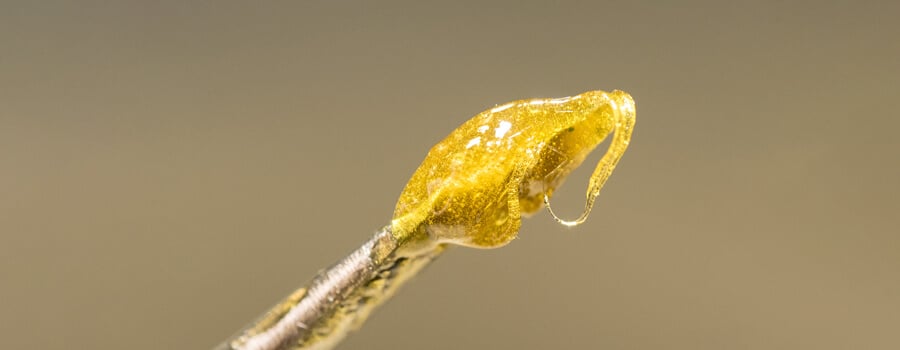
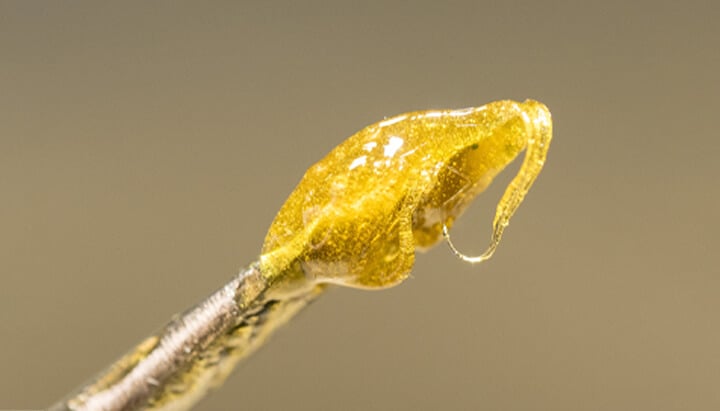
Differences Between Cannabis Resin and Rosin
To understand rosin, you need to know how it differs from cannabis resin. Essentially, rosin is concentrated resin harnessed using heat and pressure.
Cannabis resin is the sticky substance found naturally on the flowers and sugar leaves of mature or harvested cannabis plants. It is produced in the mushroom-shaped heads of trichomes (the crystalline glands that develop as the plant matures) and contains cannabinoids, terpenes, and other key cannabis chemicals. In its raw form, resin is not as concentrated as rosin.
Rosin, on the other hand, is created by applying heat and pressure to cannabis flower, hash, or kief. This method forces out the resin from the plant material, and the result is a potent, terpene-rich concentrate that is best enjoyed with a vaporizer or dab rig.
-
Live Rosin: A Noteworthy Mention
Live rosin is a specific form of rosin that is made from fresh, frozen cannabis flowers instead of dried and cured flowers. Freezing the plant material immediately after harvest preserves its terpene profile exactly as it is when the plant is fresh and living, whereas the drying and curing process can degrade it over time. When these frozen flowers are used in rosin production, the result is a concentrate with an extensive flavour and aroma profile, considered by some to be among the finest cannabis extracts due to its unusual freshness.
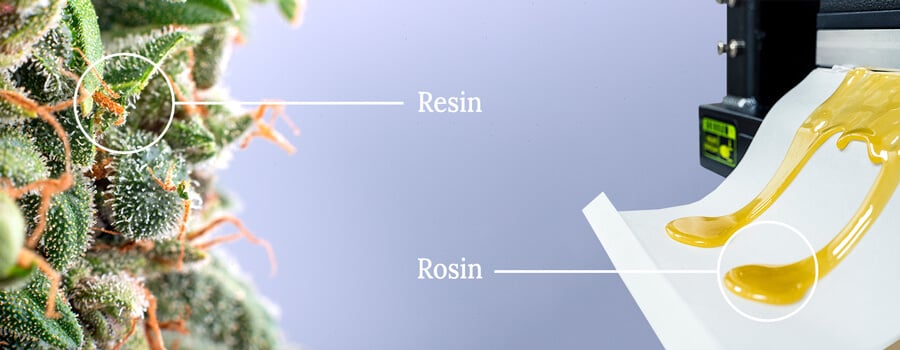
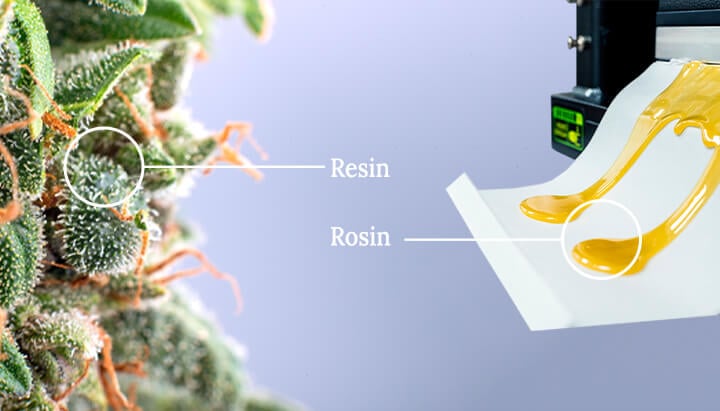
How Strong Is Cannabis Rosin?
The potency of cannabis rosin is one of the main reasons some experienced users seek it—it’s really strong. Due to its concentrated and relatively pure nature, rosin tends to have a very high THC content, with some samples testing as high as 80%. This is around three to four times stronger than cannabis flowers. As a result, rosin offers a very different kind of high compared to normal smoking. Reserved for experienced users and individuals seeking intense experiences, beginners attempting it at home for the first time should definitively proceed with caution.
Is Rosin Stronger Than Hash?
On average, rosin is stronger than hash. Hash, or hashish, has been consumed for centuries and is typically made by compressing the resin (kief) found on cannabis flowers. Kief is usually collected by sifting flowers in a special kief collecting box, but you can also collect it from a grinder with a crystal catcher. The THC concentration of hashish can range from about 20% to 60%, depending on the potency of the cannabis plant and the extraction method used. Both kief and hash contain far more impurities compared to rosin, as they will each contain some degree of plant matter.
The Easiest Way to Make Cannabis Rosin
Making rosin is really easy and requires minimal equipment, offering a safe way to produce cannabis concentrates at home.
Equipment
- Hair straightener (for small batches)
- Rosin press (for larger quantities)
- Baking parchment
- Cannabis material (bud, hash)
- Grinder
- Dab tool or spatula
- Heat-resistant gloves (optional but helpful)
Step-by-Step Directions for Making Cannabis Rosin
Follow the steps below to create your own high-quality rosin.
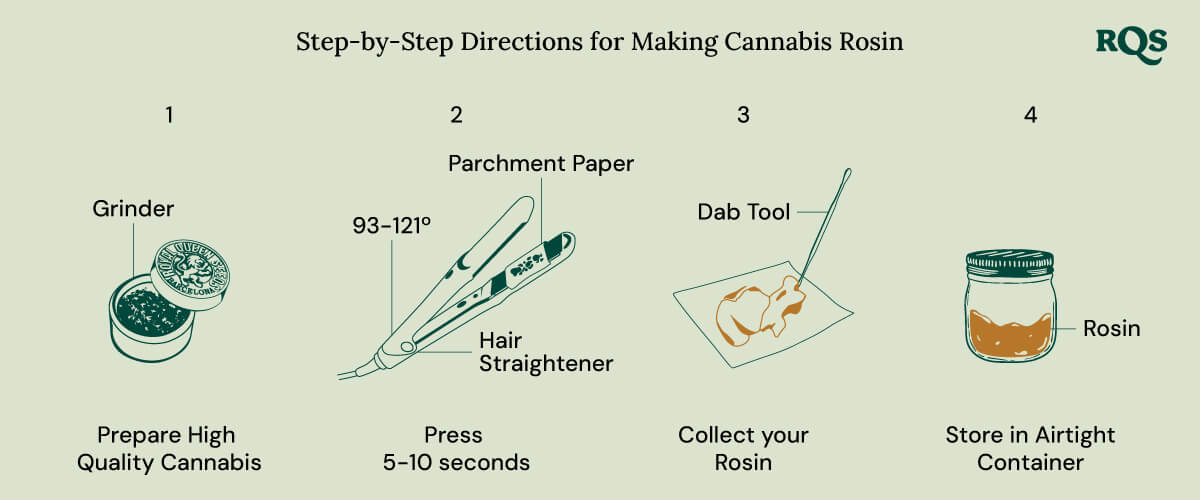
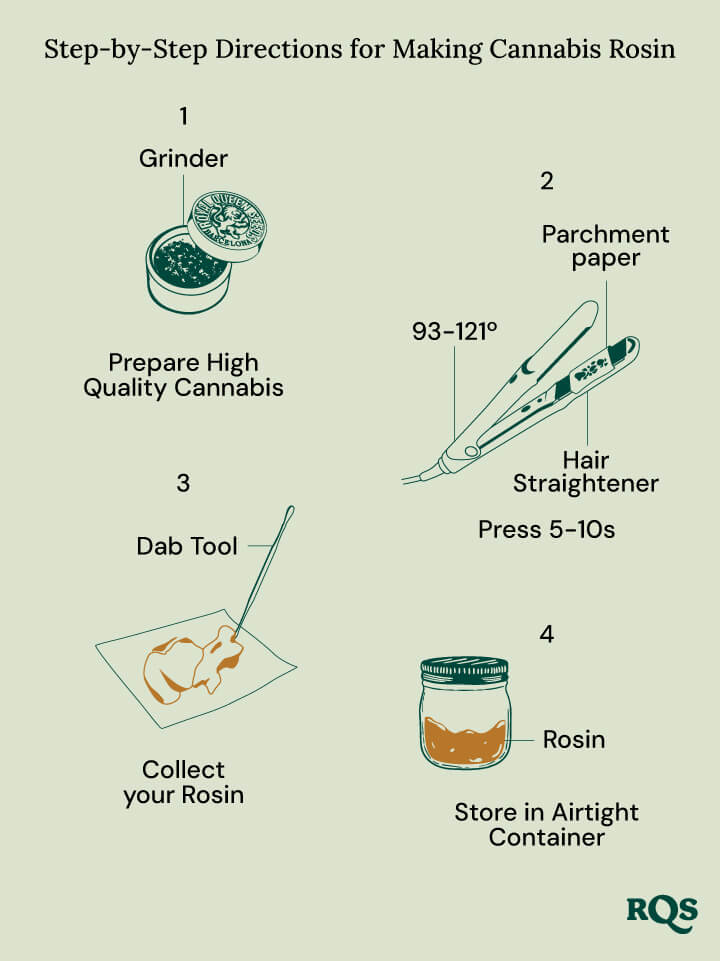
1. Preparation: Choose Your Cannabis Material
- Select Quality Cannabis: The quality of your starting material is the main factor that determines the quality of the final rosin. Use high-quality, well-cured buds for the best results. If you've cultivated your own, pour your homegrown buds into the recipe. You can also use kief or hash as alternatives.
- Prep Your Material: If using buds, ensure they are neither too dry nor too moist. A slight moisture content (55–65% RH) makes for the most effective extraction. Use humidity packs to dial in the proper moisture content if necessary.
- Portion Size: Break down your cannabis into smaller pieces—a grinder is best for this. This ensures an even application of heat and pressure during extraction.
2. Heating: Apply Heat and Pressure
- Set Up Your Press: If using a hair straightener, set it to either a low or medium temperature (around 93–121°C). For those with a rosin press, follow the manufacturer's instructions for best results.
- Pressing: Place your ground cannabis flower between two pieces of parchment paper. If you’re using a hair straightener, press down firmly for about 5–10 seconds. If you’re using a rosin press, apply the pressure as recommended, usually for about 45–60 seconds.
- Repeat if Necessary: Depending on the material and equipment, you might need to adjust the pressure or duration for best results. Experimenting with small batches first can help you find the optimal settings.
3. Collection: Carefully Collect the Rosin
- Cool Down: Allow the parchment paper to cool for a few seconds after pressing. Once cool, the rosin will hold together with greater solidity, making it easier to handle.
- Collect With a Tool: Using a dab tool, spatula, or similar instrument, gently scrape the rosin off the parchment paper. Be careful to avoid tearing the paper or contaminating your concentrate.
4. Storage: Preserve Potency and Flavour
- Airtight Containers: Use small, airtight containers made from glass or silicone to store your rosin. These materials are less likely to react with the concentrate and help to preserve its quality. You can even buy specific concentrate stash jars for exactly this purpose.
- Cool Environment: Store your rosin in a cool, dark place to maintain its potency and terpene profile. Exposure to heat, light, or air can degrade the quality over time, causing cannabinoids to break down and lose potency.
- Long-Term Storage: For long-term storage, consider perhaps refrigerating or freezing your rosin. Be sure to let it reach room temperature before opening the container to avoid moisture accumulation, which could later lead to mould.
How to Tell if Rosin Is High-Quality
Identifying high-quality rosin is important whether you’re purchasing it or making it at home. The quality of rosin can vary significantly based on the extraction process, the starting material, and storage conditions. What follows are key indicators to help you discern the quality of your rosin.
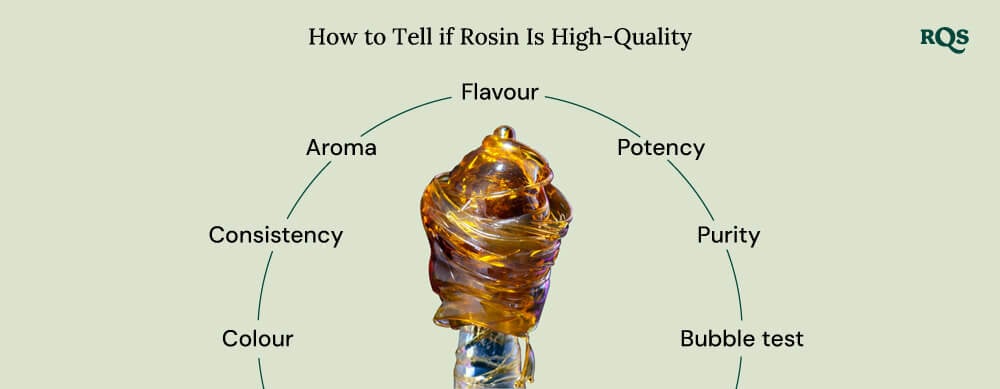
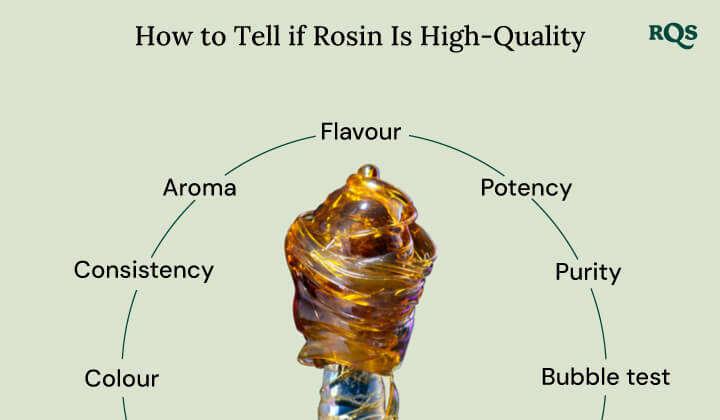
- Consistency: High-quality rosin should have a consistent texture that can range from sappy and sticky to more solid and shatter-like. The final consistency is mostly determined by the temperature used during the extraction process and the original material's moisture content. A stable, consistent texture that is neither too liquid nor too brittle is often a sign of careful extraction and handling.
- Colour: The colour of rosin should ideally be translucent with hues ranging from gold through to amber. Darker colours can indicate older material or excessive heat during extraction, which may lead to a reduction in flavour and potency.
- Aroma: Terpenes are responsible for the aroma and flavour of cannabis concentrates, including rosin. Hopefully, your rosin should have a strong, pleasant aroma that matches the terpene profile of the flower from whence it came.
- Flavour: Alongside aroma, the flavour of rosin should be pronounced and reflective of its source strain. High-quality rosin will taste clean and feature flavour notes specific to the cannabis used in its production.
- Potency: The potency of rosin, while dependent on the THC and CBD content of the starting material, is obviously one of the main indicators of quality. Good rosin should provide an intense, clean high.
- Purity: High-quality rosin should be free from impurities and contaminants. This means no plant material, dust, or other residue should be visible. Pure rosin isn’t just nice to look at, but it will taste much better too.
- Bubble test: A practical test for assessing rosin quality involves lightly heating a small amount of the concentrate. High-quality rosin will bubble consistently and cleanly due to the lack of plant material. An absence of bubbling or the presence of excessive, dark smoke may indicate lower quality and greater residue or plant material.
Rosin Oil: The Simplest Cannabis Concentrate?
Appreciated for its simplicity and safety, rosin offers a solventless way to explore cannabis concentrates. This guide indicates how to produce this top-quality, potent, yet easy cannabis concentrate at home, preserving the strength and flavours of your source material.
DisclaimerExtracts, concentrates, and oils used for dabbing are among the strongest cannabis products available. Proceed with caution when using substances high in THC. Start with low doses and slowly increase over time to build up a tolerance to the compound.
Remember: Set and Setting will help you deal with various situations.
Stay Cultivated.








































